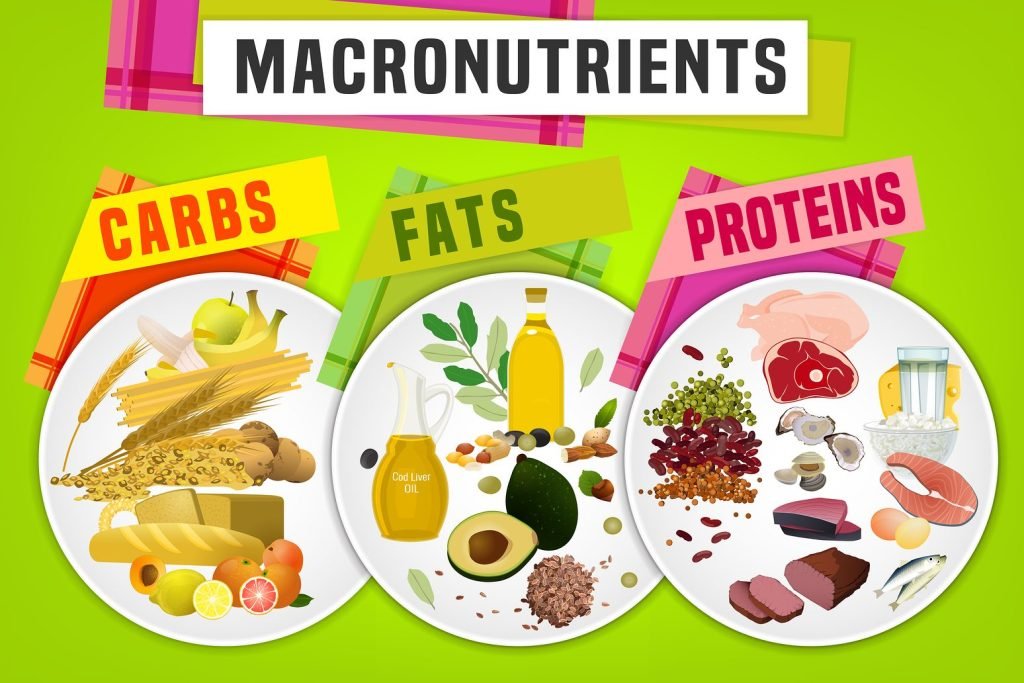If you’re looking to reduce body fat, you’re not alone. Many people struggle with excess body fat, which can lead to a variety of health problems. Fortunately, there are several effective strategies you can use to reduce body fat and improve your overall health. In this article, we’ll explore some of the most effective methods for reducing body fat.
Part 1: The Important Missing Link for Fat Loss
How do I Improve my fat loss?”, “Carbohydrates make you fat, go Keto!”, “Whole foods are good, snacks and fast foods are bad!”. Messages like these are all over the web and are endorsed by some fitness trainers because of the quick and easy results they seem to give.
Foods labelled as having objective values when they are in essence an object of neutrality. Before and after pictures are littered all over social media as evidence for the coaches’ methods and recommendations yet many of us still fail to see how unreliable these pictures are. This video illustrates how most “before and after” pictures are actually taken which leads us to the question: how can we actually determine the effectiveness of one’s methods?
The answer to that question is relatively simple yet often convoluted – adhering to a caloric deficit / negative energy balance. Our society is obsessed with instant gratification which compels one to seek out diets which produce the quickest visual change instead of one which imparts them with the necessary knowledge and skills to maintain that change. We often forget that fat loss is interdisciplinary – one has to properly grasp their socio-economic and psychological environment before they can grow.
Fat loss in itself is an act of change and an opportunity for growth, yet many of us only look at the outcome instead of the process, we forget to ask ourselves “why do we want this change?”. And when we do, we tend to fear it. I hope that after this post, we will be able to leave with a better understanding of why we want to lose fat, to embrace this change, and be equipped with the proper knowledge and toolset to live an eudaimonic life.
“I want to change, but not if it means changing”
– Stephen Grosz
Psychological Interventions

“To know yourself, think for yourself”
– Socrates
Cognitive
“Find Your Why”. I’m sure many of you have heard this term since it was made popular by Simon Sinek in his TED Talk and 2009 book “Start with Why”. But why is it so important? Ryan & Deci (2001) outlined a theory of motivation termed the Self-Determination Theory which posited that no matter one’s success, self-endorsed goals will enhance well-being while the pursuit of heteronomous goals will not.
In Michel Foucault’s book Discipline and Punish, he outlines the concept of normalisation which entails the construction of an idealised standard of conduct for society to live according to. This supports the growing prominence of “socially prescribed” perfectionism where individuals try to live up to the standards of society for approval which increases burn-out, depression and a lack of experienced meaning (Curran & Hill, 2019).
Consequently, one may not be motivated to achieve their goals since they do not align with one’s personal values due to an absence of introspection which causes one to live according to another’s wishes. (e.g., losing fat to attract the opposite gender).
Socio-economic
Evaluating one’s work environment, available budget and social life are essential to building and developing a toolset which they can use to adapt to an ever-changing environment.
Income is an essential consideration when determining food choices to ensure no extra stress is placed on the individual due to an increase in expenditure. One’s social life can influence food choices and frequency of eating out. So accounting for these and learning how to adapt reduces the stress and pressure felt especially if adherence fails for a day so that self-efficacy remains high.
Behavioral

Habit-formation is the most effective strategy for maintaining lifelong lifestyle change (Rothman et al., 2009), and is developed in 3 phases (Gardner et al., 2012):
- Initiation phase – new behaviour and the context in which it will be done are selected.
- Learning phase – behaviour is repeated in the chosen context to strengthen the context-behaviour association
- Stability phase – habit has formed and its strength has plateaued, so that it persists over time with minimal effort or deliberation
Breaking old habits is incredibly arduous so developing new habits over old ones is more effective for fat loss than giving up an existing behaviour (Lally & Gardner, 2013) – e.g., eating an apple instead of potato chips, zero-calorie drinks instead of regular drinks.
Small changes should be done first since it develops quickly and prevents failure which can reduce self-efficacy (Bandura, 2020), and having an understanding that habits take about 10 weeks to form (Lally et al., 2010), helps set realistic expectations. It only gets easier though so don’t fret.
Below is an effective template that has helped me and my clients develop long-term habitual changes so please do use it!
- Decide on a goal that you would like to achieve for your health.
- Choose a simple action that will get you towards your goal which you can do on a daily basis.
- Plan when and where you will do your chosen action. Be consistent: choose a time and place that you encounter every day of the week.
- Every time you encounter that time and place, do the action.
- It will get easier with time, and within 10 weeks you should find you are doing it automatically without even having to think about it.
- Congratulations, you’ve made a healthy habit!
My goal (e.g. ‘to eat more fruit and vegetables’) _________________________________________________
My plan (e.g. ‘after I have lunch at home I will have a piece of fruit’)
(When and where) ___________________________ I will ____________________
From. Gardner et al. (2012)
Part 2: The Fundamentals of Nutrition
Science of calories
Energy balance is the cornerstone of weight loss. So in essence we have to eat less and move more. Calorie tracking would be the most effective tool in this case since it provides a rough estimation to determine our progress – calorie tracking isn’t 100% accurate but it provides a good outline for us to monitor our body weight to determine correlations and progress.
With this knowledge, we can already denounce the subjectification of foods into labels denoting positive and negative values. I mean, what makes a food good or bad? By what standards do we hold these objects against? Eat what you want, but be mindful and build good habits that can last in the long run. It’s about finding what works for YOU to be in a caloric deficit.

Does macronutrient composition matter?
Macronutrient matters but not as much as people think. It’s always going to depend on what your goals are. The recommended carbohydrate intake for an individual focused on endurance training vs. strength training while losing weight differs slightly. But for the purposes of this blog which focuses on fat loss, I will not dive into the nuances.
How about high protein diets? Protein does increase satiety inter-meal which can reduce cravings for improved hunger management (Paddon-Jones et al., 2008). Hence, it would be beneficial to include a source of protein in every meal whilst not obsessing over it.
The media loves to perpetuate the belief that protein induces a significant thermogenic effect. However, Wolfe (2006) found that the thermogenic effect of food (TEF) is insignificant as a contributor to weight loss.
Supplements (Debunked!)
Although not as trendy now, fat loss supplements are still floating around the market so it’s important to understand that no supplement can fix a bad diet.
FAD Diets
I’m sure a lot of us already know that FAD diets fail to produce everlasting results but why exactly are they able to produce such great changes in a short period of time? I have listed a few FAD diets below to briefly demonstrate how they produce results
| Diet | Description | Mechanism |
| Vegan | Only plant-based foods without honey, dairy or eggs | Caloric Deficit |
| Keto | Almost 0g of carbohydrates, calories only comes from fat and protein | |
| Intermittent Fasting | Eating within a prescribed window of time | |
| Paleo | Whole foods without dairy, legumes and grains |
These diets all make getting into a caloric deficit easier because entire food groups are cut out once limitations are placed. Yet we only see critiques of the diet without accounting for how they impact the human psyche exactly. Khawandanah & Tewfik (2016) explains how FAD diets can lead to eating disorders and depression due to conformity to the norm as mentioned above which avoids the necessary psychological interventions needed. Physiologically, this can lead to “yo-yo dieting” whereby the individual goes through stages of extreme weight loss followed by weight gain which increases the risks of heart disease, cancer, diabetes, LDL cholesterol as well as reduced energy and muscle mass (Khawandanah & Tewfik, 2016).

Part 3: The Cherry On Top: Exercise type and Advice
Training (Aerobic and Anaerobic Systems)
Cardiovascular Training
We have 2 primary energy systems – the aerobic and anaerobic energy systems. The aerobic energy system mainly utilises fat as fuel through fat oxidation and is the primary system when exercise lasts beyond 3 minutes at low to moderate intensities. Think about continuous jogs and brisk walks below 75% of your heart rate max, these primarily use your aerobic system. The anaerobic system, contrariwise, uses glucose as its main source of fuel and is the primary system below 3 minutes and at high intensities of training. (e.g., 100m sprints, hypertrophy resistance training). However, it’s important to note that at any time, all energy systems are being utilised concurrently, it’s just a question of which system is dominating.
High-intensity interval training (HIIT) has been heavily marketed to be the “best” form of training available for fat loss, but is it really? Below a comparison of the advantages and disadvantages of HIIT compared to moderate intensity continuous training has been drawn to illustrate its effectiveness.
| HIIT | |
| Advantages | Disadvantages |
| Burns more absolute fat with the same duration as MICT | Cannot be done by individuals with cardiac diseases |
| Increased fat-free mass | Requires a good base of cardiovascular fitness |
| Improved cardiovascular fitness | Increased risks of injuries when done too frequently or too long |
| Increased fatigue | |
HIIT usually involves short bouts of vigorous exercise (>90% of maximum heart rate) followed by short periods of low activity or complete rest which allows us to deduce the main energy system being activated – anaerobic. At around 35% of one’s maximal oxygen consumption (VO2max) more glucose is used for metabolism than fat due to 2 main factors: recruitment of more fast twitch fibres and an increase in blood epinephrine. However, energy expenditure for the same duration of HIIT compared to MICT is significantly higher, resulting in more absolute fat being used. This makes HIIT more time-efficient but more dangerous since it is easier to overtrain as more lactate is produced from the increased glycogen usage. Furthermore, without a good cardiorespiratory base, one would be unable to push oneself beyond 90% of HRmax needed during HIIT.
So…What’s better?
It Depends!
What are your goals? Purely fat loss? To gain muscle mass while losing fat? These will determine the frequency, volume and intensity of HIIT and MICT you will do. Carefully assess your goals and schedule so that you can customise your cardiovascular training to help meet and not hinder your goals.
So What Actually Works?
Being in a caloric deficit is the determining factor behind weight loss so caloric tracking is the most effective tool we can utilise. However, there have been many concerns over obsessive calorie counting, which have led people to shun this valuable tool. I’d argue that developing a strong mental state helps avoid all these complications due to the reduced stress to conform and increased self-forgiveness.
To get more technical, hunger is often the most pressing issue when it comes to dieting, hence building habits that manage hunger are essential to cultivating a healthy lifestyle. Below are some practical tips I have learnt through my life as a coach and human:
Practical Advice
- Fibre has been shown to increase intra-meal satiety through multiple mechanism such as increased oral processing time which induces cephalic responses and thus improves satiety (Miquel-Kergoat et al., 2015), and increased gastric volume due to the presence of larger particles from the water-absorbing properties of fibre (Hervik & Svihus, 2019). Thereby reducing the portion size of each meal. Larger particles also increase retention time which increases inter-meal satiety (Hervik & Svihus, 2019), thereby reducing the urge to snack or consume big meals.
- Air-popped popcorn instead of chips for snacks. Fruits are a good option instead of chips, but due to its different texture compared to chips, it may not be a good replacement. On the other hand, popcorn has similar textures and is more like a “snack food” compared to fruits. Furthermore, popcorn is rich in fibre, which increase both inter and intra-meal satiety as mentioned above, and antioxidants (Coco Jr. & Vinson, 2019). It is also lower in calories compared to chips for the same mass.
- Opting for low/zero calorie beverages such as coke zero or oolong tea instead of sugar-sweetened beverages like lime juice. Both stimulate sweetness but one has calories while the other does not.
- Cooking spray instead of butter or regular oil when cooking. Sprays claim to be zero calories when sprayed in quick bursts. These sprays help to coat the pan quickly while providing fewer calories than traditional cooking butter or oils.
- Increase the volume of vegetables and leafy greens per meal to increase the volume of food. Due to these foods being high in volume and low in calories, they stimulate gastric distention and quickly stimulate the vagus nerve to send signals to the brain to inhibit the hunger-stimulating hormone ghrelin (Hervik & Svihus, 2019). Vegetables are also rich in fibre which tackles satiety through the mechanisms mentioned above.
- Reduce calories to a max of 500 kcal to avoid muscle mass loss
- Drink lots of water. When you swap sugary beverages with water, the benefits are considerably larger. It is a simple technique to reduce sugar and calories. Water can also be consumed during meals, where drinking two glasses of water affects subjective feelings of hunger and decreases satiety during meals, and therefore the client can drink water during meals to psychologically feel fuller for longer (Lappalainen et. al., 1993).
There’s no one in this world who knows your body better than you. But if you ever need some guidance, RAW has your back. If you’re ready to revamp your lifestyle to focus on fat loss instead of weight loss, our personal training program can help you build the right workout regimens and nutrition plans.
To help you track your progress and measure your body fat percentage, our InBody 120 body composition test is also at your service.
You can change your life with just a click. Book a free consultation with us today and kickstart your workout sessions with the most competent trainers in Singapore.
References
Bandura, A. (2020). Social cognitive theory: An agentic perspective. Psychology: The Journal of the Hellenic Psychological Society, 12(3), 313.
Coco Jr., M., & Vinson, J. (2019). Analysis of Popcorn (Zea mays L. var. everta) for Antioxidant Capacity and Total Phenolic Content. Antioxidants, 8(1), 22.
Curran, T., & Hill, A. P. (2019). Perfectionism is increasing over time: A meta-analysis of birth cohort differences from 1989 to 2016. Psychological Bulletin, 145(4), 410–429.
Foucault, M. (1991). Discipline and punish: The birth of the prison (Reprint). Penguin Books.
Gardner, B., Lally, P., & Wardle, J. (2012). Making health habitual: The psychology of ‘habit-formation’ and general practice. British Journal of General Practice, 62(605), 664–666.
Hervik, A., & Svihus, B. (2019). The Role of Fiber in Energy Balance. Journal Of Nutrition And Metabolism, 2019, 1-11.
Khawandanah, J., & Tewfik, I. (2016). Fad Diets: Lifestyle Promises and Health Challenges. Journal of Food Research, 5(6), 80.
Lally, P., & Gardner, B. (2013). Promoting habit formation. Health Psychology Review, 7(sup1), S137–S158.
Lally, P., van Jaarsveld, C. H. M., Potts, H. W. W., & Wardle, J. (2010). How are habits formed: Modelling habit formation in the real world. European Journal of Social Psychology, 40(6), 998–1009.
Lappalainen, R., Mennen, L., Van Weert, L., & Mykkänen, H. (1993). Drinking water with a meal: a simple method of coping with feelings of hunger, satiety and desire to eat. European journal of clinical nutrition, 47(11), 815-819.
Miquel-Kergoat, S., Azais-Braesco, V., Burton-Freeman, B., & Hetherington, M. (2015). Effects of chewing on appetite, food intake and gut hormones: A systematic review and meta-analysis. Physiology & Behavior, 151, 88-96.
Rothman, A. J., Sheeran, P., & Wood, W. (2009). Reflective and automatic processes in the initiation and maint9enance of dietary change. Annals of Behavioral Medicine, 38(S1), 4–17.
Ryan, R. M., & Deci, E. L. (2001). On happiness and human potentials: A review of research on hedonic and eudaimonic well-being. Annual Review of Psychology, 52(1), 141–166.
Schippers, M. C., & Ziegler, N. (2019). Life crafting as a way to find purpose and meaning in life. Frontiers in Psychology, 10, 2778.
Paddon-Jones, D., Westman, E., Mattes, R. D., Wolfe, R. R., Astrup, A., & Westerterp-Plantenga, M. (2008). Protein, weight management, and satiety. The American Journal of Clinical Nutrition, 87(5), 1558S-1561S. https://doi.org/10.1093/ajcn/87.5.1558S
Wolfe, R. R. (2006). The underappreciated role of muscle in health and disease. The American Journal of Clinical Nutrition, 84(3), 475–482.
- Permanently Closed Gyms in Singapore: Complete 2016-2025 List & Why You Need to Choose Wisely - December 29, 2025
- Beyond the Comfort Zone: Embracing the Unknown in Fitness and Life - November 14, 2025
- Why Traditional Gyms Don’t Work (And What Does): The Anti-Gym Revolution - November 14, 2025

6 Responses